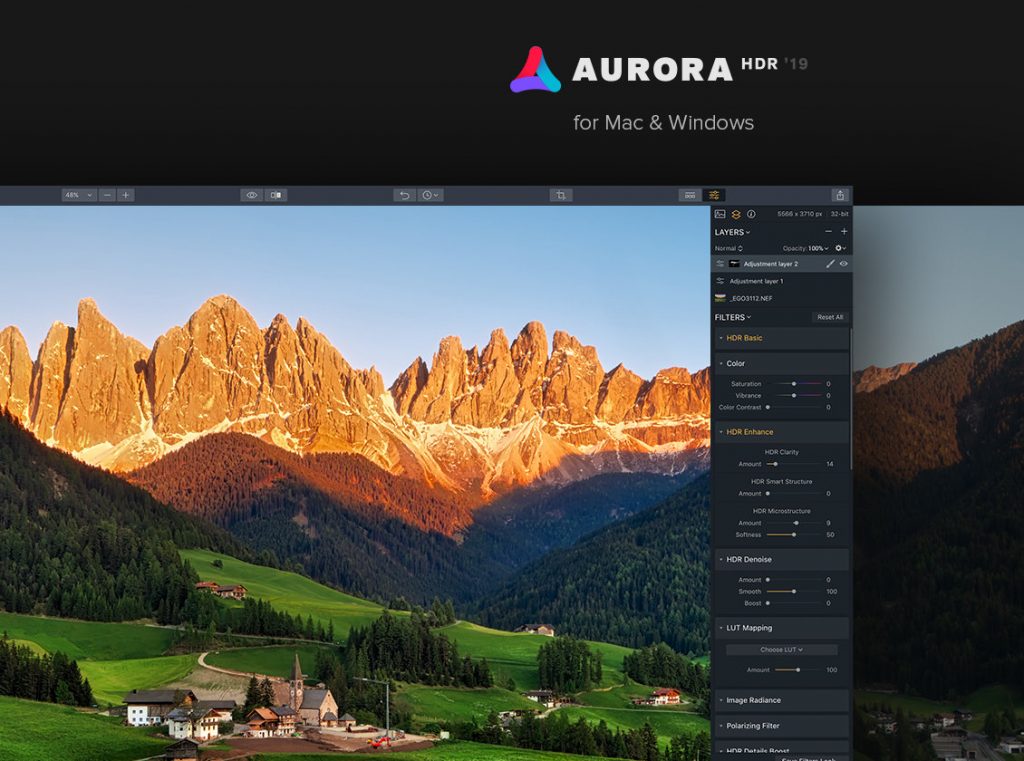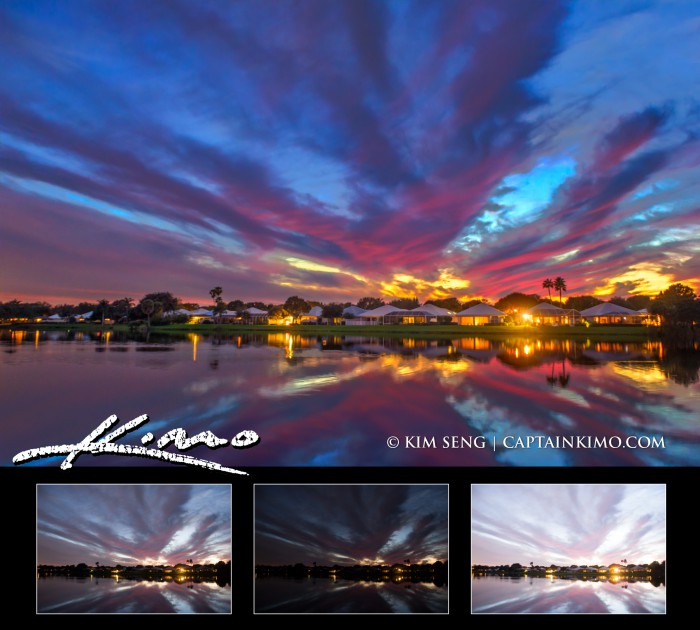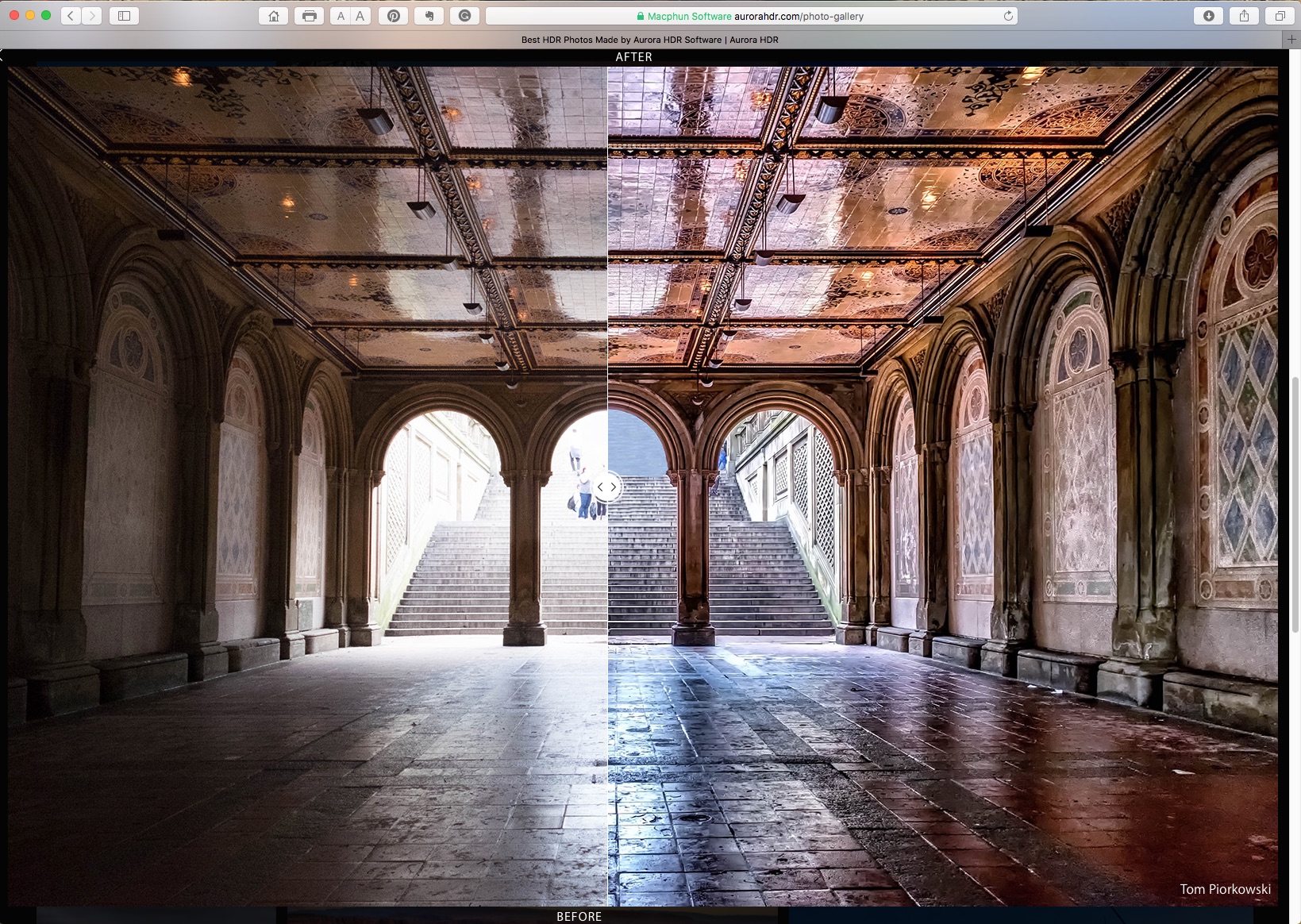
- Best hdr software for mac 2016 full#
- Best hdr software for mac 2016 software#
- Best hdr software for mac 2016 code#
- Best hdr software for mac 2016 windows#
Best hdr software for mac 2016 software#
Some software assumes the display colorspace. There are also plenty of images out there that don't include color space tags, so it's undefined as to what colors they're actually trying to display. Get rid of that assumption and everything will look correct!
Best hdr software for mac 2016 code#
That's why things look terrible on monitors that aren't sRGB the code was built with the assumption that monitors will always be sRGB. Authors of specs don't want to say "sorry, there is no way you can ever use colors outside of sRGB without some new syntax", so they just break colors completely for everyone. And are then disappointed when an application handles colors correctly, and what they see on their monitor are the same boring colors their digital camera saw out in the field.)īut, the problem is not Windows, the problem is applications and specs those applications use. (On the other hand, a lot of people like more vibrant colors, so they think it's a good thing that they get artificial vibrance enhancement on everything they view. In fact, pretty much everyone using a wide-gamut display will see wrong colors everywhere because of this I have one, and I just forced into sRGB mode because it's so broken. That means if you're a web designer and you pick #ff0000 on your sRGB display, people using a wide-gamut display will see a much more vibrant shade of red, and everything will look off. CSS doesn't specify the colorspace of colors, so typically browsers will just send whatever is in there directly to the display. The problem is sources of color data that don't have a tag. Even web browsers handle this fine if they are presented with an image with a colorspace tag, they'll make sure your monitor displays the right colors. Most applications do that if you have a wide-gamut display and take an AdobeRGB-space image off your digital camera, the colors will be better than if you looked at it on an sRGB display. Applications can read that and tell the OS that colors are in a certain color space, and it can map that to your display. So, everyone kind of did their own thing! Image formats long had a way to tag the pixel data with a colorspace, so images with tags basically work everywhere. Every color written down in a file suddenly became meaningless an extra piece of information would be required to turn that (r, g, b) tuple into a display color. But, then it became cheap and easy to use better primaries ("wide gamut"), and we had a problem. That was not a major problem until relatively recently every display used the same primary colors, so there was no need to specify what colorspace you were sending values to the OS in.
Best hdr software for mac 2016 full#
#ffffff means "send full power to the red, green, and blue subpixels", without describing what color the red, green, and blue subpixels are. The underlying problem is that APIs describe colors in the display colorspace.
Best hdr software for mac 2016 windows#
I think Windows provides all the tools necessary for accurate color management, it's just that not everyone has done the necessary bookkeeping for it to work.

I'd never heard of this feature until now. I'm just so surprised I had utterly no idea macOS worked like this. But taking a screenshot while screen brightness is 100% shows no clipping, because the video is no longer "overexposed" to the interface. Interestingly confirming it: taking a screenshot of the video while screen is at 75% brightness show massive brightness clipping in the video, since it's "overexposed" in the interface's color range. If it is, though it's flawlessly undetectable in terms of brightness - the interface white and grays don't change at all. I'm wondering if it switches from hardware dimming to software dimming when the video is opened and closed, and if that switch has to do with the cursor disappears. Also, opening and closing the video file makes my cursor disappear for a couple seconds!

If I decrease my display brightness to 50%, the whites in the video are no longer at maximum 100% brightness, maybe more like 75%.īut it's also kind of buggy - after messing around with system brightness a bit, the video stops being brighter and I've got to quit QuickTime and restart it again for effect.

Wow, that's crazy, it actually works - just tried out the sample videos in QuickTime on my 2016 13" MBP (P3 gamut, running Big Sur) and confirmed working.īasically: if I set my display to ~75% brightness and open the video, the whites in the video are 100% brightness, way brighter than #FFF interface white on the rest of my screen.īut if I increase my display brightness to 100%, the whites in the video are the same as the interface white, because it obviously can't go any brighter.


 0 kommentar(er)
0 kommentar(er)
